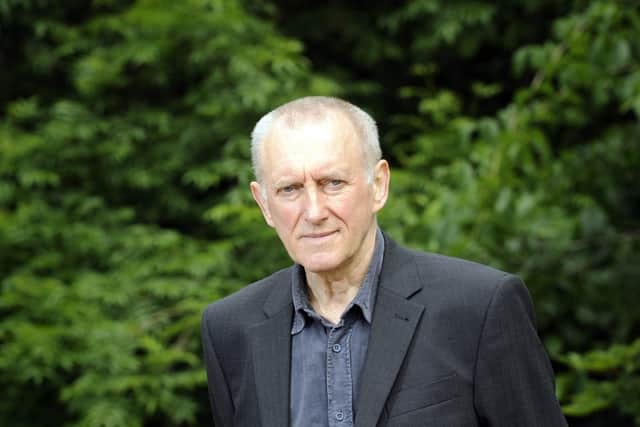Edinburgh International Book Festival reviews: James Kelman | Brian Dillon and Brandon Taylor
THE fetishisation of creative writing is something which can happen around book festivals, with keen disciples gathering at the feet of literary giants hoping some of that magic might brush off. Who better to puncture that particular bubble than James Kelman, the first Scottish writer to win the Booker Prize?
Kelman was on fine fettle on Sunday night, straight-talking, sincere and without pretension. His new book, God’s Teeth and Other Phenomena, is about a curmudgeonly literary heavyweight turned Professor of Creative Writing who is invited as a visiting tutor to an elite project called The House of Art and Aesthetics.
While Professor Jack Proctor is not Kelman, the advice Proctor gives in an address to art students - from which Kelman read - seemed to come from the heart. “Make stuff up. Go where it takes you. Stay with it and stay true.”


During the brief period in which he, Tom Leonard and Alasdair Gray shared the Professorship of Creative Writing at Glasgow University, what he wanted to tell students was almost entirely practical. Sit at the table. Put words down. Move them around, build sentences. Archive your work. Read other writers. “Don’t bother with inspiration, that’s all sh*te.”
Be true to the materials, in a writer’s case, the language. Be true to reality, humanity, and in doing so, you will soon find yourself nudging against restrictions, social and cultural attitudes, racism, elitism, suppression of indigenous cultures. Remember the shocked faces in the London literary establishment when Kelman’s How Late It Was, How Late won the 1994 Booker Prize?
His work has always been implicitly political. If it isn’t immediately obvious in the writing, it is clear in people’s reaction to it. He is now published by a small American press, he said, because no UK publisher will take it. Some bookshops refuse to stock his books. With work of this standard, it’s their loss. The only surviving member of that Glasgow “triumvirate”, Kelman goes from strength to strength with age.
Kelman is also a fine essayist, and the form of the essay has been put under the microscope in the last 24 hours by some of the leading practitioners in the genre. On Monday, Brian Dillon and Brandon Taylor spent a fascinating hour resisting a definition of the essay form. Dillon, the author of a book called Essayism, described it as “a series of fleeting curshes on subject matters or forms, a series of digressions that never ends”. Taylor agreed that the form is “fugitive, nefarious, hard to pin down”.
How does one come to write essays? Dillon described how he came to revere the form after reading Roland Barthes in Rathmines Public Library in Dublin when he was a teenager. He went on to pursue what he described as a “failed academic career”, before realising that the opportunities to write as he wanted lay outwith the confines of academe. For Taylor, the inspiration was finding a copy of André Aciman’s False Papers in a charity shop.
Both talked, as Kelman did, about the practicalities of their practice. Dillon starts with research, accompanied by snatches of writing, followed by a period of detailed planning. Then there is single draft written in longhand which is typed up but not redrafted. Taylor described the beginning of the process at taking away an idea “to gnaw at in the dark” then “putting mush on the page and moving it around until it resolves into something like an idea”.
One Sunday evening, Dillon took part in an event with Fiona Bradley, director of the Fruitmarket Gallery, which focused on his latest book, Affinities. A collection of essays on art and on the nature of an “affinity” itself, this spans subjects from Tacita Dean to Andy Warhol, William Eggleston to Claude Cahun - and because digressions are integral to the form - also Brideshead Revisited.